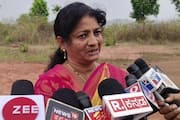Is Kerala really on par with USA in infant mortality rate?
- Interestingly, the survey says the IMR in urban areas (6) are a bit higher than the rural (5).
- As per the NFHS-3 (2005-06), the IMR in Kerala was 15.

It’s a reason to cheer for Kerala as it managed to bring down the infant mortality rate (IMR) from 12 to 6 per 1,000 live births, making it on par with the USA. But the figures of the fourth National Family Health Survey-4 (NFHS) are met with scepticism among health activists.
To go by the figures of the NFHS, Kerala achieved the target of bringing down the IMR to six by 2030, much earlier. The survey conducted in 2014-15 also calculated the under-five mortality rate (U5MR) at 7, down from 16, while the national average is 50. Interestingly, the survey says the IMR in urban areas (6) are a bit higher than the rural (5). As per the NFHS-3 (2005-06), the IMR in Kerala was 15.
The NFHS also contradicts the figures quoted in December 2016 Sample Registration System (SRS) that puts the state’s IMR at 12. The SRS figures show the urban areas are better (IMR 10) while the IMR rate in rural areas stood at 14. But in the NFHS-4, the urban areas are behind the rural. The SRS data from 2008 to 2015 pegs the state's IMR at 12, except in 2010 when it touched 13 per thousand live births.
The SRS data from 2008 to 2015 pegs the state's IMR at 12, except in 2010 when it touched 13 per thousand live births.
Related: Modi Somalia jab right? Infant mortality soars in Kerala
Here’s why some health activists take the NFHS with a pinch of salt:
- The NFHS sample is too insufficient to reach a credible IMR rate.
- The sample size was 11,555 households (approximately 55,000 people)
- In this sample size, the number of live births would be about 850 and deaths not more than 8 or 10, experts.
- The sample does not adequately represent all districts.
- NFHS-4 was outsourced to private agencies, and hence activists doubt the credibility of the data.
The NFHS finding has triggered a debate among the health activists.
KP Aravindan, Emeritus Scientists at Medical College Hospital Kozhikode, opined: “Infant mortality projections should not be made from NFHS data. The sample size is 11555 households. This means about 57775 people. The approximate number of births in this population would be about 850. The number of events (infant deaths) expected would be only about 10. This is too few to be acceptable. The error margin would be too high.”
Related: Kerala: Infant malnutrition death comes back to haunt tribal belt, toll 7 now
But some points out that the data collected by the Department of Health Services DHS) is somewhat close to the NFHS data.
Beyond the debate around data and sample size, the situation in backwards areas and tribal heartlands of the state continue to be grim. Whenever an infant death is reported from Attappady or Wayanad, it triggers a political storm in the state. But the debate dies down as new surveys and data gloss over the ground reality.
Related: Malnutrition deaths haunt tribal children in Attappady
More than half of the infant deaths in Kerala is still reported from these tribal areas where poor landless tribes eke out a living under the mercy of govt. welfare schemes. Ironically, the corrupt politicians and officials prevent the benefits of these schemes reach the real beneficiaries. Many lakhs were drained out by officials from the special scheme implemented to ensure health and welfare of tribal mothers and infants in Wayanad district alone.
The infant mortality rate in Wayanad and Attappadi is well above the state average. This happens when the statistics show that the government spent Rs. 11.5 crore in 2015-16 to 11850 persons on Janani Janma Suraksha scheme that aimed at providing Rs. 1,000 monthly to ensure health and welfare of mothers and newborns.
















